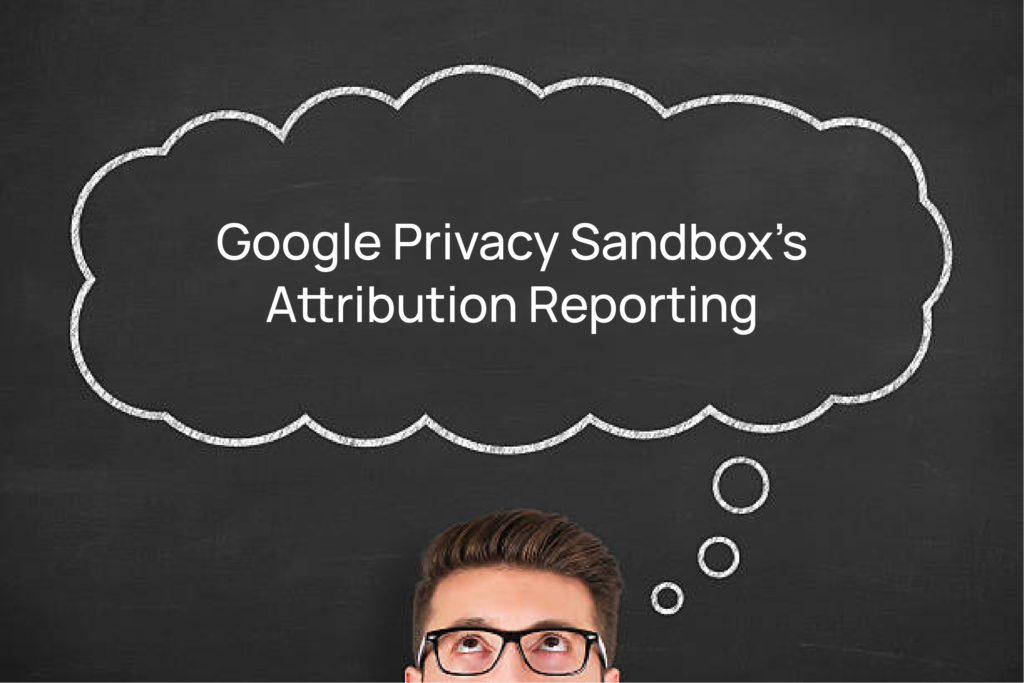Contents
- Deciphering the Google Privacy Sandbox’s Attribution Reporting
- Critical Elements of the Privacy Sandbox that Impact Attribution
- What is Attribution Reporting within Google’s Privacy Sandbox?
- How Does Attribution Reporting Work?
- Attribution Reporting Concerns
- Netting it Out: How Should a Brand Think About the Privacy Sandbox’s Attribution Reporting?
Google Privacy Sandbox: Attribution Reporting Demystified
01/29/2024
Deciphering the Google Privacy Sandbox’s Attribution Reporting
As of January 4, 2024, Google has begun its process to kill off the 3rd party cookie in Chrome. In this first step, (and promptly on schedule) it turned off cookies for 30 million users worldwide.
The impacts will be significant, especially for ad targeting, personalization, retargeting and other programmatic functions. Much of the digital advertising ecosystem has built up entire infrastructure, processes and capabilities that we all take for granted, and these are being ripped out. Marketers who have come to rely on certain abilities will need to adapt, adjust and also walk away from entire marketing methods they use on a daily basis.
But what about marketing measurement? If you are in marketing analytics and are tasked with delivering measurement for your marketing peers, Google’s changes will impact you too. Thankfully misery loves company because nobody is going to escape the impact of the Google Privacy Sandbox. So let’s unpack the details and dive in.
Critical Elements of the Privacy Sandbox that Impact Attribution

First, it helps to outline a few critical elements about the Privacy Sandbox that impact attribution:
- It is killing off 3rd party cookies. But we already know that. However, it is worth noting that if your current measurement approaches require stitching together ads, devices and conversions using cookies as a common identifier, this will all stop working in Chrome later in 2024.
- It is killing off the ability to uniquely identify individual consumers, regardless of cookies. Chrome will prevent the ad tech ecosystem from using individual identifiers like IP address or device fingerprinting. So if you are relying on other ways to uniquely identify users for your attribution, things are going to get a lot more difficult than they already were.
- Google is only one (important) aspect of digital advertising but most brands aren’t just spending a 100% of their budget on Google advertising. This is important because as we’ll see in the Attribution Reporting details, the Privacy Sandbox only really cares about Google and Chrome, and won’t help your brand with anything else.
What is Attribution Reporting within Google’s Privacy Sandbox?
A new, and yet to be completed API within the Privacy Sandbox called “Attribution Reporting” is being built to help publishers and advertisers link ad views and clicks to conversions. This reporting is being built to provide a semblance of performance reporting without allowing a brand to uniquely identify a consumer using Chrome in a chain of advertising to online conversions, while still allowing “attribution”.
How Does Attribution Reporting Work?
The Privacy Sandbox’s Attribution Reporting provides a way to report on two main “events” that are connected:
- Ad-Side Events: special code is added to a publisher’s site to record events such as ad views or ad clicks, as well as contextual data such as creatives used, or geography. These are called “Source Events”.
- Conversion-Side Events: special code is added to the e-commerce site to record conversion events such as purchases or other activities- but without any individual user information- in what’s called a “Trigger Event”.
Both the Source and Trigger Event data is stored in the Chrome browser, and then fed to the ad publisher which can then provide reporting of its own. This conversion reporting can come in a few forms:
- Event-Level reporting which has more details about the ad.
- Aggregatable Reporting which has more detail about the conversions (like products, revenues, etc.).
But importantly, these two reporting sources do NOT link specific ads to a specific conversion, meaning there is no tie between a unique ad, click and purchase.
Summary Reports bring the event and aggregate information together to show aggregate level performance for the ad campaign:

Attribution Reporting Concerns
It all sounds great in theory right? Just like with traditional multi-touch attribution, there are some serious marketing measurement drawbacks of the new Privacy Sandbox Attribution approach that every marketing analytics professional needs to know about:
Over-Attribution of Google Ads
The one thing the Attribution Report is virtually guaranteed to do is over-value Google ads. It assumes that because an ad was seen or clicked, that the ad drove the sale, and since the Privacy Sandbox only deals with the Google ecosystem, your Google-managed ads will appear to be higher performing than they actually are, for the many reasons broken out below.
Does Not Measure Marketing Incrementality
In our “Magical Myths of Multi-Touch Attribution” guide, OptiMine explains why ad views and clicks should not be misinterpreted as drivers of sales. There are many factors that result in conversions including things like seasonality, the day of week, promotional pricing, economic conditions, or other ads in other channels. So assuming a 1:1 connection between an ad and a conversion misses the concept of “incrementality” completely, and it leads to big trouble when brands decide to spend more on lower funnel ads thinking this will grow sales.
Missing Impact of Non-Google Platform Ads
If your brand is like most, Google only accounts for a portion of your budget. And if you’ve gone through the exercise of adding up “credit” from all of the various advertising platforms used to find a number greater than your actual sales, you’ll instinctively know the issue at play here. What if the consumer saw your ads on Facebook and also on Google? Chances are extremely high that both Google and Facebook will both take credit for the sale. Google’s Attribution Reporting won’t report on a brand’s Meta ads, nor a brand’s TV, Radio or OOH. The Privacy Sandbox Attribution Reporting misses a lot.
Digital Only
Does your brand have conversions that are non-digital (in-store, call center, sales reps, bank branches, resellers, etc.)? None of these conversions will be captured by the Attribution Reporting APIs. Zero. Nada. And if a brand uses traditional media as part of its mix, those will be missing as well.
Incredibly Incomplete View
We’ve outlined many of the missing elements of Attribution Reporting above, but another major gap is that the Attribution Reporting APIs only work on Google Chrome, which only accounts for about half of US browser sessions. The other half of your web traffic? Missing in action. Is a brand simply to double the conversions to make up the missing data? Not a great idea.
It Interferes with A/B Testing
Attribution Reporting unlinks the connections between ads and conversions. Because of this, a brand can no longer rely on an A/B test because the test and control groups are not managed and kept separate. Brands are then forced to construct A/B tests that are run at a geo-level (testing one approach in one geo and comparing it with a different approach in another geo).
Netting it Out: How Should a Brand Think About the Privacy Sandbox’s Attribution Reporting?

At best, Attribution Reporting is a partial and incomplete measurement tool, and one with some serious flaws. For brands that invest heavily in advertising, Google’s solution does not make the grade and could lead to poorer decision quality that will harm the brand.
Brands that are serious about measuring the incremental impacts and contributions of marketing need to drop their over-reliance on identity-based attribution and move to modern, agile marketing mix modeling. Read OptiMine’s complete guide to marketing mix modeling to learn more about the advantages and considerations with this powerful capability.
What to learn more about OptiMine’s agile marketing mix modeling and how it can overcome the shortcomings of the Privacy Sandbox Attribution Reporting? Contact us today!

